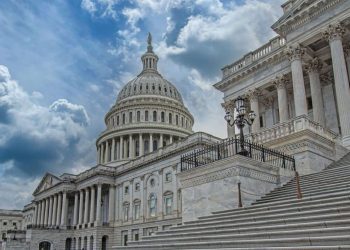RISMEDIA, February 9, 2011—(MCT)—What role should government play in housing finance? A struggle over that $5 trillion dollar question, which divides Democrats from Republicans, will begin Wednesday when a subcommittee of the GOP-controlled House of Representatives considers the fate of mortgage-finance titans Fannie Mae and Freddie Mac.
Fannie and Freddie have been in government conservatorship since the Bush administration seized them in September 2008 in an effort to quell global financial panic. Republicans vow to get the government mostly out of the business of mortgage lending; Democrats want to change the role of government support, but not end it.
Fannie and Freddie right now either back or guarantee more than $5 trillion worth of U.S. mortgages, so the stakes are high.
Here’s a guide to help separate fact from fiction during what promises to be a heated debate.
Q: How do these two institutions work?
A: The primary function of Fannie and Freddie is to pool U.S. mortgages into securities that are sold to investors, a process called securitization. Income from monthly mortgage payments is pooled and provides an income stream to investors who buy these securities—often called Fannies and Freddies.
By selling their loans into this “secondary” mortgage market, banks don’t have to retain the loans and are free to loan more. Fannie and Freddie operated as private companies with shareholders, but they were chartered by Congress and had federal oversight.
Q: What led to their seizure?
A: The government first stepped in to broker a fire sale of Wall Street investment bank Bear Stearns in March 2008. Investors fled that bank because it held vast amounts of mortgage securities that were packaged by Wall Street, not Fannie and Freddie. Bear Stearns fell amid the start of a severe contraction in the national housing market.
In the months that followed, investors holding Fannies and Freddies worried that the same bursting bubble in home prices could sink their investments. Since Fannies and Freddies didn’t carry an explicit government guarantee as Treasury bonds do, investors began clamoring for one. The vital secondary market froze up and reached a state of near panic, prompting then-Treasury Secretary Henry Paulson to seize Fannie and Freddie on Sept. 7, 2008.
Q: What role did Wall Street play?
A: For most of their history, Fannie and Freddie performed their role without problems, helping homeownership grow and freeing up banks to lend more. In the late 1990s, Wall Street began aggressively pooling mortgages into bonds—called private-label mortgage-backed securities.
After 2001, these Wall Street firms focused heavily on subprime loans given to the least creditworthy borrowers. In 1999, 81% of new U.S. mortgages were securitized by Fannie and Freddie. By 2005 and 2006, the final years of the housing bubble and the period most characterized by the deep erosion of lending standards, Wall Street firms were securitizing two out of every three new U.S. mortgages.
Q: Do all experts agree with that view?
A: No. Some conservative scholars argue that the very existence of Fannie and Freddie created a distortion in the free market and protected those making bad economic decisions, a phenomenon economists call moral hazard. These scholars argue that government involvement distorted how markets determine and price risk and encouraged risky lending to weak borrowers, sometimes called subprime borrowers.
Q: Didn’t government requirements to lend to minorities and the poor fuel this subprime lending?
A: This is a narrative spun by some conservatives that is not grounded in fact. Beginning in 1992, Fannie and Freddie were directed to foster more lending to minorities by purchasing and securitizing these loans—when the loans met guidelines.
At the high-water mark, Fannie and Freddie did securitize 52% of the loans made to low- and moderate-income borrowers. But during the boom from 2001 to 2007, bank lending standards weakened dramatically and in 2006, the height of the housing boom, Fannie and Freddie purchased just 24% of the loans made to low-income borrowers.
Moreover, subprime was traditionally always a small portion of total lending. As home prices soared, borrowers looking to flip homes quickly became the majority of subprime borrowers, caring not what the interest rate was because they never intended to own the home for very long.
Q: What happens now?
A: Right now, there’s still virtually no private-sector secondary market for mortgage lending. Fannie and Freddie securitize about 90% of all new mortgages.
One reason mortgage lending is being curtailed, according to the Mortgage Bankers Association, is that Fannie and Freddie are reviewing loans made by banks during the housing boom and giving many of them back to banks when there is evidence of misrepresentation or other errors in underwriting. More than $38 billion of these “put backs” have been identified and more are coming.
Under last year’s broad revamp of financial reform, the Obama administration was required to present by Jan. 31 its plan for how to get Fannie and Freddie out of conservatorship. That deadline was missed, but a proposal is expected this month.
Q: Why didn’t the regulatory revamp include Fannie and Freddie?
A: The Obama administration felt weakness in the housing sector made any such effort ill timed. But the so-called Dodd-Frank Act did deal with most of what went wrong in housing, creating tough new regulations, requiring loan bundlers to retain some of what they buy. And it created a new Consumer Financial Protection Bureau to create and enforce new standards for mortgages.
Q: What options are there for Fannie and Freddie?
A: The administration has provided few details. Treasury Secretary Tim Geithner promised in late January a proposal that would “crowd private capital back into the housing finance business, to pull back the role of the government over time, and leave us with a system that will not be vulnerable to the really tragic colossal failures not just in Fannie, Freddie, but more generally in underwriting practices” by lenders.
Q: Does anyone have a plan yet?
A: Two Washington think tanks—the conservative American Enterprise Institute (AEI) and the liberal Center for American Progress (CAP)—put out dueling plans in January that help frame the political debate.
Q: What does each involve?
A: The AEI plan would gradually get Fannie and Freddie completely out of packaging conventional loans over a period of five years, and would limit the government role to small programs like Federal Housing Administration loans. The private sector would eventually do all the packaging of mortgages into securities.
“There is no GSE (government sponsored enterprise), none of this funny hybrid thing that tries to be simultaneously private or government. We would like to take out the broad subsidization of the mortgage market by the taxpayer,” said Alex Pollock, co-author of the AEI report.
The plan from the Center for American Progress would create Chartered Mortgage Institutions, fully private and regulated by a federal agency, to pool mortgages into bonds. A separate Catastrophic Risk Insurance Fund would be established, funded by premiums on the mortgage bonds sold by the Chartered Mortgage Institutions. This would work similar to the way the Federal Deposit Insurance Corp. guarantees deposits at a bank through a fund paid into by lenders. These institutions replacing Fannie and Freddie would have much higher equity requirements and neither the stocks nor bonds they issue would have any government guarantee.
Q: Will Congress get something done?
A: This is going to be a tough fight since there are two very different visions of what went wrong, and thus what needs to be fixed. No credible analyst believes Fannie or Freddie will leave government control within five years, so the legislative fight may continue into the 2012 presidential elections.
(c) 2011, McClatchy-Tribune Information Services.
Visit the McClatchy Washington Bureau on the World Wide Web at www.mcclatchydc.com.










